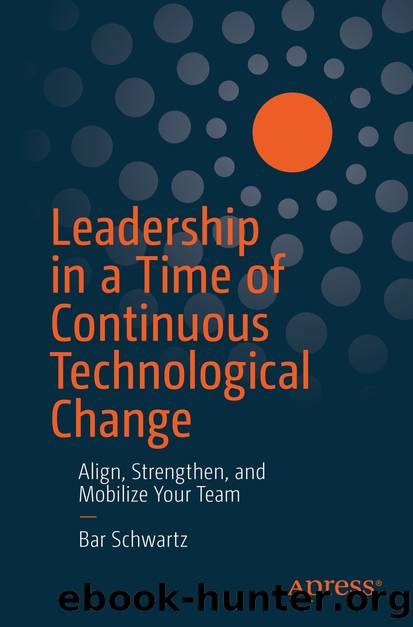Leadership in a Time of Continuous Technological Change by Bar Schwartz

Author:Bar Schwartz
Language: eng
Format: epub
ISBN: 9781484263006
Publisher: Apress
Case Study Epilogue
For Nick, the stages of emancipation were difficult. Through the process, he understood that he was unaware of the company vision, operated in a different culture than his peers, and never communicated the company business objectives to his team. His first reaction was to reject it and get annoyed that it was too idealistic. Ultimately, it meant that he didnât do his research before taking the job. Then he provided his team with the right information. Information that neither he nor his team knew they needed. It is much easier to hire an expert to fix the problem than invest days into understanding the vision, clarifying priorities, principles, desired behaviors, and learning to work collaboratively. It felt like too much.
Rome was not built in a day. Not all leaders do everything right from day one. Intention counts and taking one small step at a time is important. Even small awkward steps can get you moving in the right direction.
For Nick, it was to take his salespeople and product development team to an offsite. He felt awkward about it, but he did it anyway. The first step of emancipation is to accept that it is your job to provide people with transparent and honest information so that they, with you, can make decisions.
âWe are here to solve a problem,â Nick explained to his team. âWe care about our customers; otherwise we wouldnât care about their problems. Caring is one of our company values.â For the individuals present, it was the first time anyone explained the company values. âWe are aggressive with our customers. We push the product to them instead of understanding what they are missing. Would you do that to someone you care about?â It resonated. Everyone cared about the customer. The salespeople felt uncomfortable pushing solutions that were insufficient, and the product development team was annoyed by all the urgent escalations by customers about features they never planned to develop. âOur goal is to find the middle ground. What are the minimum features we need to build now to not only increase our sales but also that our customers are happy to buy our product?â
The day was full of fruitful discussions. They discussed the product from the viewpoint of a customer. They argued about the problem the product solved and the type of relationship they were expected to develop with the customers. At times, it became uncomfortable. However, everyone appreciated being part of the discussion.
Throughout the offsite, the team asked many valuable questions that led to interesting outcomes. The role of a salesperson transformed into one of a success consultant who focused on how to help the customers to utilize the product better, rather than struggle on their own. Multiple individuals from the development team suggested being present at product demos to understand better where sales pitches failed. Also, they came up with a list of small improvements to address critical sales blockers. Nick gathered all of the questions and suggestions and was charged with positive hopes for the future.
Download
This site does not store any files on its server. We only index and link to content provided by other sites. Please contact the content providers to delete copyright contents if any and email us, we'll remove relevant links or contents immediately.
Time Management Made Easy: How to Cultivate New Habits, Improve Productivity and Get Things Done by Joshua Strachan(2365)
The 7 Habits of Highly Effective People by Stephen R. Covey & Sean Covey(2098)
The Concise Laws of Human Nature by Robert Greene(1713)
Doesn't Hurt to Ask by Trey Gowdy(1555)
Primal Leadership by Daniel Goleman(1125)
Hook Point: How to Stand Out in a 3-Second World by Brendan Kane(1098)
HBR's 10 Must Reads 2021 by unknow(1044)
Don't Sweat the Small Stuff...and It's All Small Stuff by Richard Carlson(1013)
Amazon Unbound by Brad Stone(979)
100 Things Successful People Do by Nigel Cumberland(963)
HBR's 10 Must Reads 2021 by Harvard Business Review(956)
The Job Closer by Steve Dalton(937)
Master of One by Jordan Raynor(934)
Lives of the Stoics by Ryan Holiday & Stephen Hanselman(900)
Declutter Your Mind: A step by step guide to learn to control your thoughts, stop worrying, relieve anxiety and eliminate panic attacks and negative thinking by Mia Chandler(875)
The Power of 100! by Shaun King(843)
Conflicted by Ian Leslie(798)
Coders at Work: Reflections on the craft of programming by Peter Seibel(787)
The Book of Hope by Jane Goodall(744)
